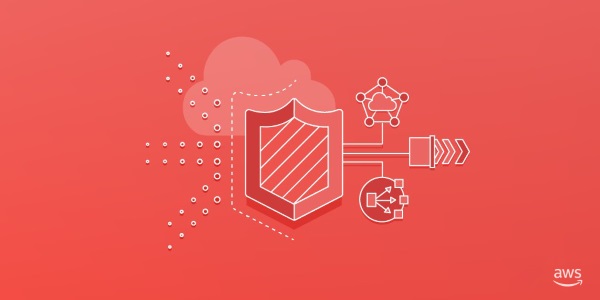AWS Security Blog
Tag: DDoS
AWS Security Profile: Tom Scholl, VP and Distinguished Engineer, AWS
In the AWS Security Profile series, we feature the people who work in Amazon Web Services (AWS) Security and help keep our customers safe and secure. This interview is with Tom Scholl, VP and Distinguished Engineer for AWS. What do you do in your current role and how long have you been at AWS? I’m […]
Automatically detect and block low-volume network floods
In this blog post, I show you how to deploy a solution that uses AWS Lambda to automatically manage the lifecycle of Amazon VPC Network Access Control List (ACL) rules to mitigate network floods detected using Amazon CloudWatch Logs Insights and Amazon Timestream. Application teams should consider the impact unexpected traffic floods can have on an application’s availability. Internet-facing applications can […]
Using AWS Shield Advanced protection groups to improve DDoS detection and mitigation
Amazon Web Services (AWS) customers can use AWS Shield Advanced to detect and mitigate distributed denial of service (DDoS) attacks that target their applications running on Amazon Elastic Compute Cloud (Amazon EC2), Elastic Local Balancing (ELB), Amazon CloudFront, AWS Global Accelerator, and Amazon Route 53. By using protection groups for Shield Advanced, you can logically […]
AWS Shield threat landscape review: 2020 year-in-review
AWS Shield is a managed service that protects applications that are running on Amazon Web Services (AWS) against external threats, such as bots and distributed denial of service (DDoS) attacks. Shield detects network and web application-layer volumetric events that may indicate a DDoS attack, web content scraping, or other unauthorized non-human traffic that is interacting […]
Set up centralized monitoring for DDoS events and auto-remediate noncompliant resources
When you build applications on Amazon Web Services (AWS), it’s a common security practice to isolate production resources from non-production resources by logically grouping them into functional units or organizational units. There are many benefits to this approach, such as making it easier to implement the principal of least privilege, or reducing the scope of […]
AWS Shield Threat Landscape report is now available
AWS Shield is a managed threat protection service that safeguards applications running on AWS against exploitation of application vulnerabilities, bad bots, and Distributed Denial of Service (DDoS) attacks. The AWS Shield Threat Landscape Report (TLR) provides you with a summary of threats detected by AWS Shield. This report is curated by the AWS Threat Research […]
The Top 10 Most Downloaded AWS Security and Compliance Documents in 2017
July 24, 2020: The number 9 item in this list, the Auditing Security Checklist, has been replaced by a Cloud Audit Academy course. The following list includes the ten most downloaded AWS security and compliance documents in 2017. Using this list, you can learn about what other AWS customers found most interesting about security and […]
Now You Can Use AWS Shield Advanced to Help Protect Your Amazon EC2 Instances and Network Load Balancers
Starting today, AWS Shield Advanced can help protect your Amazon EC2 instances and Network Load Balancers against infrastructure-layer Distributed Denial of Service (DDoS) attacks. Enable AWS Shield Advanced on an AWS Elastic IP address and attach the address to an internet-facing EC2 instance or Network Load Balancer. AWS Shield Advanced automatically detects the type of AWS resource behind the […]
Now You Can Monitor DDoS Attack Trends with AWS Shield Advanced
AWS Shield Advanced has always notified you about DDoS attacks on your applications via the AWS Management Console and API as well as Amazon CloudWatch metrics. Today, we added the global threat environment dashboard to AWS Shield Advanced to allow you to view trends and metrics about DDoS attacks across Amazon CloudFront, Elastic Load Balancing, […]
How to Help Protect Dynamic Web Applications Against DDoS Attacks by Using Amazon CloudFront and Amazon Route 53
Using a content delivery network (CDN) such as Amazon CloudFront to cache and serve static text and images or downloadable objects such as media files and documents is a common strategy to improve webpage load times, reduce network bandwidth costs, lessen the load on web servers, and mitigate distributed denial of service (DDoS) attacks. AWS […]









